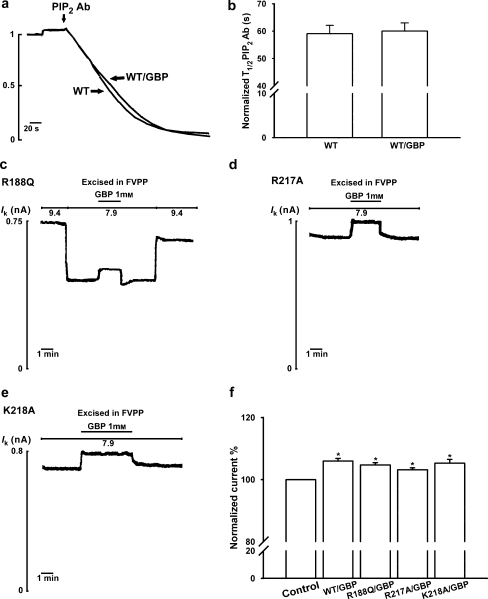Figure 3.
Gabapentin (GBP; 1-(aminomethyl) cyclohexaneacetic acid)-induced activation of renal outer medullary potassium (ROMK1) channels does not involve the phosphatidylinositol 4,5-bisphosphate (PIP2) pathway. (a) Membrane patches were excised and stabilized in FVPP solution, then anti-PIP2 antibodies (40 nM in FVPP) were used to inhibit ROMK1 channels. There was no difference in the sensitivity of wild-type ROMK1 channels to anti-PIP2 antibodies in the presence (WT/GBP) or absence (WT) of 1 mM gabapentin (n=6, P=0.1). The currents for these experiment channels were normalized and superimposed. The time bar is 20 s. (b) Half-time (T1/2) for maximal inhibition of wild-type ROMK1 channels by anti-PIP2 antibody (40 mM) in the presence (WT/GBP) or absence of gabapentin (WT). (c–e) Gabapentin (1 mM) activates three PIP2-binding site residue mutants (R188Q, R217A and K218A). (f) Percentage activation by gabapentin of the wild-type (WT/GBP) and mutant ROMK1 channels (R188Q/GBP, R217A/GBP and K217A/GBP) (n=6 for each group). *Indicates P<0.05 by ANOVA compared with the corresponding wild-type or mutant in the absence of gabapentin (control).

